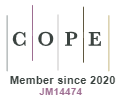Performance Management Systems in Projects
DOI:
https://doi.org/10.5585/gep.v2i1.39Keywords:
Project Management, Performance appraisal (Project), Managerial information system (Indicators, Project)Abstract
This study aims to propose a project performance indicators system, based on the analysis of theproject success criteria´s importance. The research took place in a company whose businessincludes engineering and infrastructure integrated solutions in various industrial sectors, based onaction-research method. Multiple sources of evidence were used, such as analysis of the currentsystem of indicators of the company, analysis of projects in the databases and interviews withrepresentatives of the project office and project managers. The results show the lack of causal logicstructure of the performance measure system and a lack customization according to the type ofproject and stakeholders. A new performance measure system was proposed to the studiedorganization, whose pilot project is flexible enough to cater to the contingency theory thatdifferentiates indicators for each type of project and stakeholders.References
Barclay, C. and Osei-Bryson, K. M. (2010). Project performance development framework: an approach for developing performance criteria & measures for information systems (IS) projects. International Journal of Production Economics, 124(1), 272-292.
http://dx.doi.org/10.1016/j.ijpe.2009.11.025
Cheung, S.; Suen, H.; and Cheung, K. (2004). PPMS: a web-based construction project performance monitoring system. Automation in Construction, 13(3), 361-376.
http://dx.doi.org/10.1016/j.autcon.2003.12.001
Crawford, P. and Bryce, P. (2003). Project monitoring and evaluation: a method for enhancing the efficiency and effectiveness of aid project implementation. International Journal of Project Management, 21(5), 363-373.
http://dx.doi.org/10.1016/S0263-7863(02)00060-1
Construction Industry Institute. (2006, October). Research Summary 220-1: Leading indicators during project execution. eNews. Austin, TX, USA: The University of Texas.
Freeman, R. (1984). Strategic management: a stakeholder approach. Boston: Pitman.
Kaplan, R.; Norton, D. The balanced scorecard: translating strategy into action. Harvard Business Press, 1996.
Kennerley, M. and Neely, A. (2002). A framework of the factors affecting the evolution of performance measurement systems. International Journal of Operations and Production Management, 22(11), 1222-1245.
http://dx.doi.org/10.1108/01443570210450293
Kezner, H. (2006). Project management best practices: achieving global excellence. Hoboken, NJ, USA: John Wiley & Sons Inc.
Kerzner, H. Project Management Metrics, KPIs, and Dashboards: A Guide to Measuring and Monitoring Project Performance. International Institute for Learning, Inc., New York, NY, 2011, 374p.
Neely, A. (2005). The evolution of performance measurement research. International Journal of Operations & Production Management, 25(12), 1264-1277.
http://dx.doi.org/10.1108/01443570510633648
Neely, A.; Adams, C.; and Crowe, P. (2001). The performance prism in practice. Measuring Business Excellence, 5(2), 6-12.
http://dx.doi.org/10.1108/13683040110385142
Pillai, A.; Rao, K. Performance monitoring in R&D projects. R&D Management, v. 26, n. 1, p. 57-65, 1996.
Pillai, A.; Joshi, A.; and Rao, K. (2002). Performance measurement of R&D projects in a multi-project, concurrent engineering environment. International Journal of Project Management, 20( 2), 165-177.
http://dx.doi.org/10.1016/S0263-7863(00)00056-9
Project Management Institute. (2003). Organizational project management maturity model (OPM3): knowledge foundation. Newtown Square, PA, USA: Project Management Institute.
Project Management Institute. (2008). Um guia do conhecimento em gerenciamento de projetos (PMBOK). Newtown Square, PA, USA: Project Management Institute.
Shenhar, A. J. (2001). One size does not fit all projects: exploring classical contingency domains. Management Science, 47(3), 394-414.
http://dx.doi.org/10.1287/mnsc.47.3.394.9772
Shenhar, A. and Dvir, D. (2007). Reinventing project management: the diamond approach to successful growth and innovation. Boston: Harvard Business School Press.
Downloads
Published
How to Cite
Issue
Section
- Abstract 1200
- PDF (Português (Brasil)) 741






